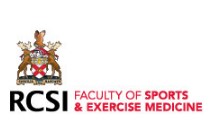Osteoarthritis
Osteoarthritis
What is osteoarthritis (OA)?
Osteoarthritis of the knee occurs when the bony surfaces (cartilage) between the thigh bone and shin bone, and sometimes on the back of the kneecap (patella), become worn and uneven. This prevents smooth movement of the joint and can be a normal part of the ageing process.
Osteoarthritis has often been referred to as the “wear and tear” disease. In conjunction with the breakdown of cartilage, osteoarthritis affects the entire joint. It initiates changes in the bone and deterioration of the connective tissues that hold the joint together and attach muscle to bone. It also causes inflammation of the joint lining.
Symptoms of OA
Osteoarthritis symptoms often develop slowly and worsen over time. Signs and symptoms of osteoarthritis include:
- Pain – affected joints might hurt during or after movement.
- Stiffness – joint stiffness might be most noticeable upon awakening or after being inactive.
- Tenderness – the joint might feel tender when you apply light pressure to or near it.
- Loss of flexibility – full range of motion through the joint may be limited.
- Grating sensation – a grating sensation may be felt , or popping or crackling when using the joint.
- Bone spurs – extra bits of bone, which feel like hard lumps, can form around the affected joint.
- Swelling – caused by soft tissue inflammation around the joint.

Risk Factors
The following risk factors can increase your risk of osteoarthritis (OA):
- Older age – the risk of osteoarthritis increases with age.
- Sex – women are more likely to develop osteoarthritis, though it isn’t clear why.
- Obesity – carrying extra body weight contributes to osteoarthritis in several ways. Increased weight adds stress to weight-bearing joints, i.e. knees. Also, fat tissue produces proteins that can cause harmful inflammation in and around your joints.
- Joint injuries – injuries, such as those that occur when playing sports or from an accident, can increase the risk of osteoarthritis. Even injuries that occurred many years ago and seemingly healed can increase your risk of osteoarthritis.
- Repeated stress on the joint – a job or sport that places repetitive stress on a joint, can lead to osteoarthritis.
- Genetics – in some cases genetics play a part in developing osteoarthritis.
Diagnostic Testing
X-Ray: cartilage doesn’t appear on x-rays. However with a loss of cartilage the space between the joints in the bone disappear.
Magnetic resonance imaging (MRI): it uses a strong magnetic field to produce detailed images of bone and soft tissues, including cartilage.
Treatment Options
1. Non-surgical
Osteoarthritis cannot be reversed but there is good evidence to suggest certain treatments can be used to help reduce pain and aid mobility.
– Medications: Pain relievers ( i.e. Paracetamol) and NSAIDs (non-steroidal anti-inflammatory, i.e. Ibuprofen ) can be taken to alleviate ongoing pain and swelling issues. Caution should be taken for people with underlying medical issues and should be discussed with your GP/ consultant.
Physiotherapy can strengthen muscles around the joint. This will help increase flexibility and reduce pain.
Lifestyle changes:
– Low impact exercise for example cycling, walking or water aerobics can strengthen muscles around the joint.
– Weight loss can relieve some pressure on the knees and reduce pain.
2. Injection
There are 3 different types of injections that can be administered:
Corticosteroid Injection: an anti-inflammatory which can be injected directly into the tissues that are causing the symptoms.
Hyaluronic Acid Injection: Hyaluronic acid occurs naturally within the body. It is part of the synovial fluid which lubricates the joint and acts as a cushion. When OA is present synovial fluid is produced in smaller amounts leading to an increase of load on the joint causing pain. These injections are sometimes referred to as ‘viscosupplementation’, meaning they add fluid to the joints.
Platelet Rich Plasma Injection (PRP): can be used to treat mild to moderate OA. Platelets play an important role in the healing process of injured or inflamed tissue. PRP injections use patient’s own blood sample which is separated and injected safely under ultrasound to the specific area.
3. Surgical
A joint replacement can be carried out where the damaged joint surfaces are removed and replaced with plastic and metal parts. Depending on the extent of OA, it may be total knee replacement or partial knee replacement.










